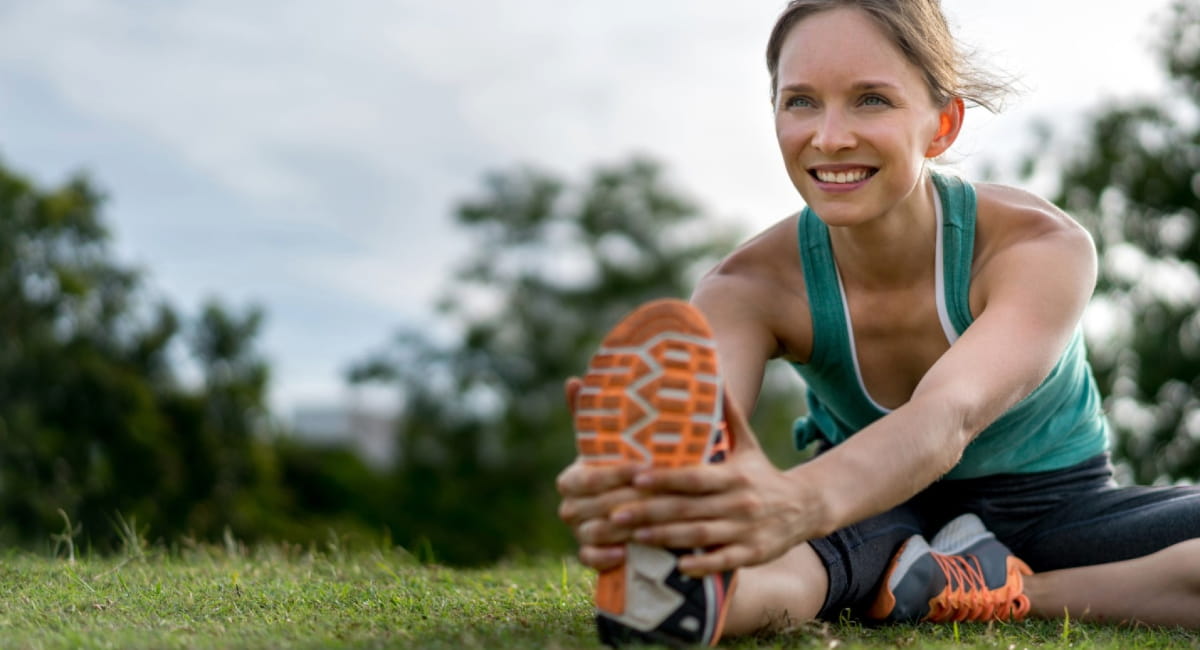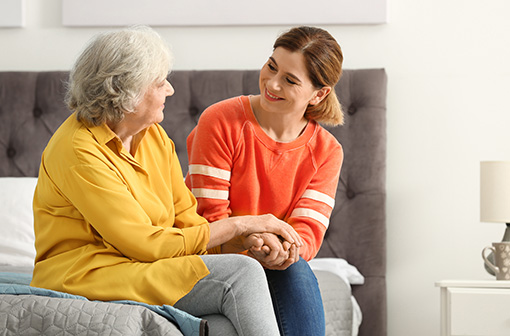“Getting a health check and being prescribed an individualised, graduated program is crucial. With guidance and encouragement, you can plan to succeed by succeeding in your planning!”—Sonya Cotton, Remedy Healthcare.
Key points
- Stretching helps with increasing blood flow and circulation, which is an ideal preparation for activity.
- Stretching and warming down helps with Delayed Onset Muscle Soreness (DOMS) and allows us to recover quickly from the strain of exercise and the associated lactic acid build-up.
- All stretching should be a smooth motion and that there is no forced, quick, jerky or end of range movements.
Increasingly people are making their way back to exercise classes, gyms and other fitness-related activities.
However, with renewed enthusiasm for these activities also comes a risk of overdoing it.
There’s nothing more frustrating than making the effort to get active, only for a muscle strain or tear to put you back on the sidelines.
With that in mind, we spoke with Kevin Holohan, Senior Physiotherapist for Remedy Healthcare, and Sonya Cotton, Remedy Healthcare State Services Lead, South Australia for some insight into the importance of pre-and post-exercise stretching, and what you can do to prevent injuries.

Why is it so important to make sure you stretch before and after exercise?
Kevin says stretching helps with increasing blood flow and circulation, which is an ideal preparation for activity.
Among many things, stretching can:
-
Improve our posture
-
Improve our range of motion
-
Aid in decreasing back pain
-
Help prevent injury
-
Decrease muscle soreness if done regularly and gently
Kevin adds that pre-exercise stretching also helps avoid injury and prepares our nerves and other tissues to fire for the movements required.
Post-exercise stretching is an underrated but essential aspect of avoiding muscle injuries. Stretching and warming down helps with Delayed Onset Muscle Soreness (DOMS) and allows us to recover quickly from the strain of exercise and the associated lactic acid build-up.
“When we first return to exercise, lactic acid build-up is very common,” Kevin says. “And we often find if we overdo it, it is much harder to move normally the next day or two – or even three or four days as we get older!”
What can happen if you don’t stretch?
Our muscles are like elastic bands – if they don’t receive regular stretching they tighten and harden and will break more easily when under sudden exertion, such as exercise or other physical activity.
Sonya says soft tissue injuries are therefore the most common occurrences – a strain or tear of the muscle fibres or worse, such as a ligament tear or ruptured tendon.
“Many of us will know of someone who returned to sport (like squash) after a big break and tore a calf muscle,” Sonya says. “Or you would have seen many older footballers tear a hamstring because they have had a long break from playing and go back to play socially and fail to handle the loading on their muscles.”
What are some good basic stretches people can do to help prevent muscle and soft tissue injuries?
Kevin says any kind of leg stretching that increases blood flow and focuses on major leg muscles is key.
“Stretch your quadriceps (front thigh muscles), hamstrings (back thigh), adductors (inner thigh), gluteal muscles (buttocks) and calves by gently stretching them through their range of motion with a towel, strap or TheraBand,” he says. “Walking and gently jogging will also increase blood flow and get your muscles and joints active.”
It’s important to remember that all stretching should be a smooth motion and that there is no forced, quick, jerky or end of range movements.
What a lot of people also need to consider is implementing a regular stretching routine.
Activities like yoga and pilates will increase flexibility, which helps make even daily tasks easier. Stretching regularly will also improve the range of motion of your joints, which helps keep you mobile and able to do more. Non-activity is one of the primary reasons people can struggle to stay independent and mobile.
In addition, Kevin recommends getting a foam roller to help relax your muscles.
What about older people? Are they more at risk?
Older people are slightly more at risk of muscular injuries but they’re at even more risk of poor general health by staying inactive.
This really highlights the importance of older people seeing an allied health specialist such as a physiotherapist, exercise physiologist or a qualified and experienced personal trainer.
“Getting a health check and being prescribed an individualised, graduated program is crucial,” Sonya says. “With guidance and encouragement, you can plan to succeed by succeeding in your planning!
“Prepare properly, wear comfortable clothes, stretch, warm up, exercise with a group or a friend, get outside and enjoy yourself. And you can reward yourself after or set a goal and a reward to motivate you to make those goals!”
Disclaimer: Remedy Healthcare Group Pty Limited and Australian Unity Health Limited are wholly owned subsidiaries of Australian Unity Limited.
An Australian Unity health partner, Remedy Healthcare provides targeted, solution-oriented healthcare that is based on clinically proven techniques. In the past ten years, they have worked with more than 75,000 Australians – helping them to manage their health through caring, coaching, empowerment and support.
Information provided in this article is of a general nature. Australian Unity accepts no responsibility for the accuracy of any of the opinions, advice, representations or information contained in this publication. Readers should rely on their own advice and enquiries in making decisions affecting their own health, wellbeing or interest. Interviewee names and titles were accurate at the time of writing.


